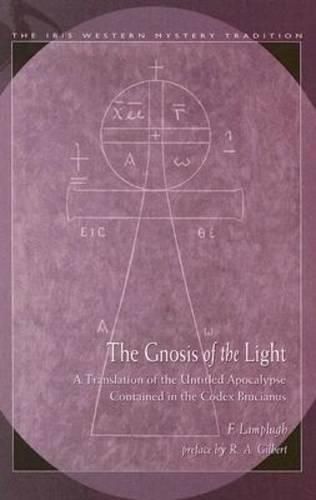Readings Newsletter
Become a Readings Member to make your shopping experience even easier.
Sign in or sign up for free!
You’re not far away from qualifying for FREE standard shipping within Australia
You’ve qualified for FREE standard shipping within Australia
The cart is loading…






In 1769, James Bruce, returning from Upper Egypt, brought The Codex Brucianus to England and bequeathed it to the Bodleian Library. It contained several Gnostic works, written in Coptic, dating from about the 6th century ad, but the original Greek texts from which they came are probably much older. Part of this collection, The Untitled Apocalypse, is translated in this book and has been dated around the 2nd century ad, the time of Basilides and Valentinus. It lays out the early Gnostic teachings in esoteric symbolism designed to work upon the initiate’s inner experience rather than being worked upon with the rational mind. Its imagery fosters contemplation intended to prepare a candidate for the Baptism of the Light in which union with the indwelling spark of the divine occurs.
F. Lamplugh includes notes that clarify the text and his introduction gives an overview of the Gnostic beliefs. R.A. Gilbert’s preface examines the history of this work and its relevance for us today.
$9.00 standard shipping within Australia
FREE standard shipping within Australia for orders over $100.00
Express & International shipping calculated at checkout
In 1769, James Bruce, returning from Upper Egypt, brought The Codex Brucianus to England and bequeathed it to the Bodleian Library. It contained several Gnostic works, written in Coptic, dating from about the 6th century ad, but the original Greek texts from which they came are probably much older. Part of this collection, The Untitled Apocalypse, is translated in this book and has been dated around the 2nd century ad, the time of Basilides and Valentinus. It lays out the early Gnostic teachings in esoteric symbolism designed to work upon the initiate’s inner experience rather than being worked upon with the rational mind. Its imagery fosters contemplation intended to prepare a candidate for the Baptism of the Light in which union with the indwelling spark of the divine occurs.
F. Lamplugh includes notes that clarify the text and his introduction gives an overview of the Gnostic beliefs. R.A. Gilbert’s preface examines the history of this work and its relevance for us today.